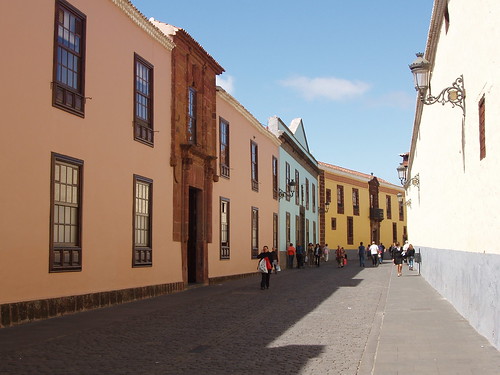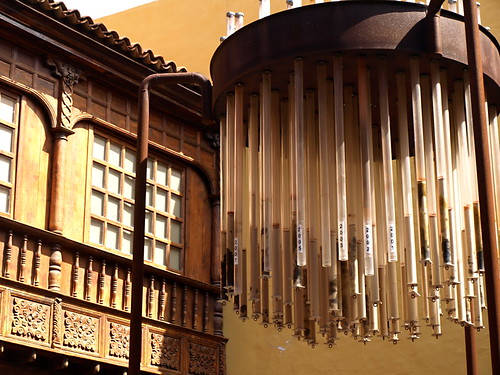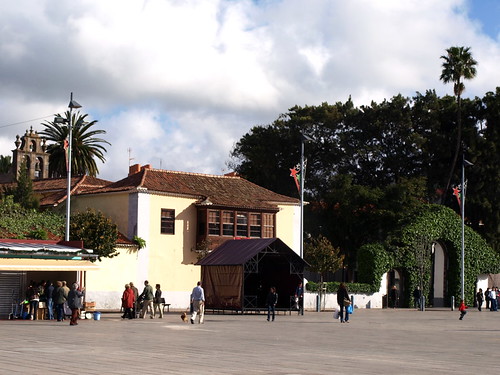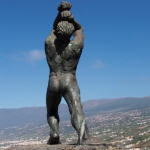Built as a model town for the new peaceful era following conquest, La Laguna was based on Leonardo da Vinci’s plan for Imola which provided a series of squares in a grid format. The design was conceived as a ‘balanced space with no walls or fortresses, within which its citizens could live peaceably together’ and was the first, non-fortified, Spanish Colonial town. Plaza del Adelantado was to be the heart of that space and the most important buildings were constructed to face into it.
Convento de Santa Catalina. Dominating one side of Plaza del Adelantado, in its early 16th century day this was the most important religious building in the Canarian archipelago and housed 100 nuns of the Dominican order from Seville. The fretted gallery on the roof is the vantage point from which the nuns could see without being seen.
Casa del Corregidor, Casa de la Alhóndiga and Casa de Los Capitanes. Lining the top of Calle Obispo Rey where it meets Plaza del Adelantado, these three fine mansions date from the 16th, 18th and 17th centuries respectively and were constructed as civil buildings – the first being the court of corrections, the second the economic administration centre and the third, as its name suggest, a military residence which now houses the Tourist Office.
Catedral de Nuestra Señora de Los Remedios. Originally constructed at the beginning of the 16th century on the orders of conquistador Alonso de Lugo and included a five storey tower, the highest in Spain in its day. The facade which we see today was constructed in 1820. Unfortunately the building was allowed to deteriorate to ruin until 2000 when restoration began. Although closed for renovation, the exterior of the building is still worth a look and is extremely photogenic.
History Museum. Housed in Casa Lercaro on San Agustín, this beautiful 16th century house is packed to its Mudejar rafters in fascinating facts and artefacts around Tenerife’s social and cultural history.
Iglesia de Nuestra Señora de la Concepción. Dating back to the early 16th century and built on the spot where the first Holy Communion on Tenerife was celebrated in 1496, the church is a Monument of National and Historic Interest and its tower is an icon of La Laguna.
Convento de San Agustín. Constructed in the 16th century for two monks of the Augustin Order from where they taught scholars Latin and grammar, the convent is fittingly now part of La Laguna University and its sublime cloistered courtyard is home to permanent and temporary art exhibitions and a lending library. At the entrance lies the spectre of the ruins of the Church of San Agustín which was completely destroyed by fire in 1964.
Plaza Cristo. Now home to one of Tenerife’s finest farmers’ markets, the Plaza is named after one of the most venerated statues in Tenerife – the 16th century Flemish carving of Christ which was commissioned by conqueror of the island, Ferdinand De Lugo, and is now housed in the church and convent of El Cristo on the far side of the square.
Andrea (Andy) Montgomery is a freelance travel writer and co-owner of Buzz Trips and The Real Tenerife series of travel websites. Published in The Telegraph, The Independent, Wexas Traveller, Thomas Cook Travel Magazine, EasyJet Traveller Magazine, you can read her latest content on Google+









Be the first to comment